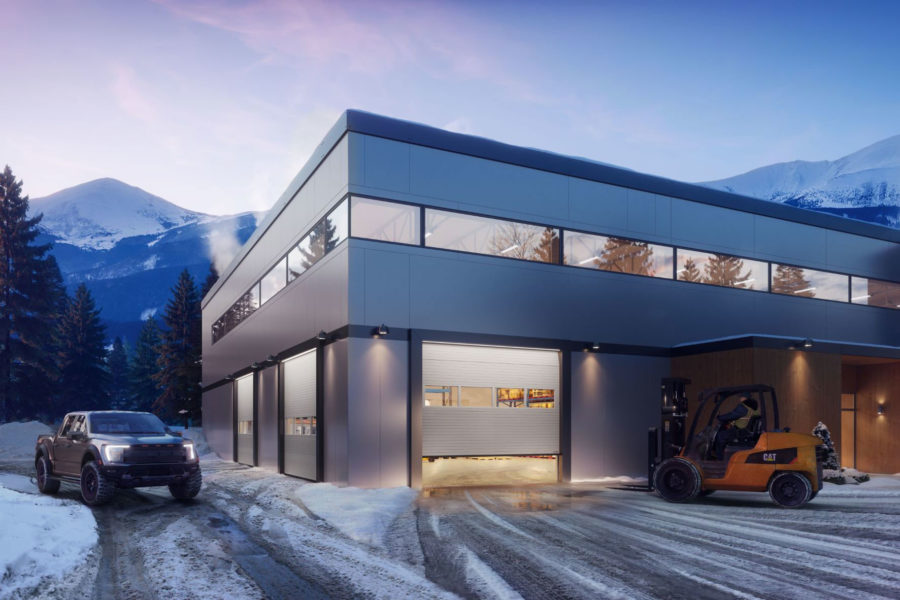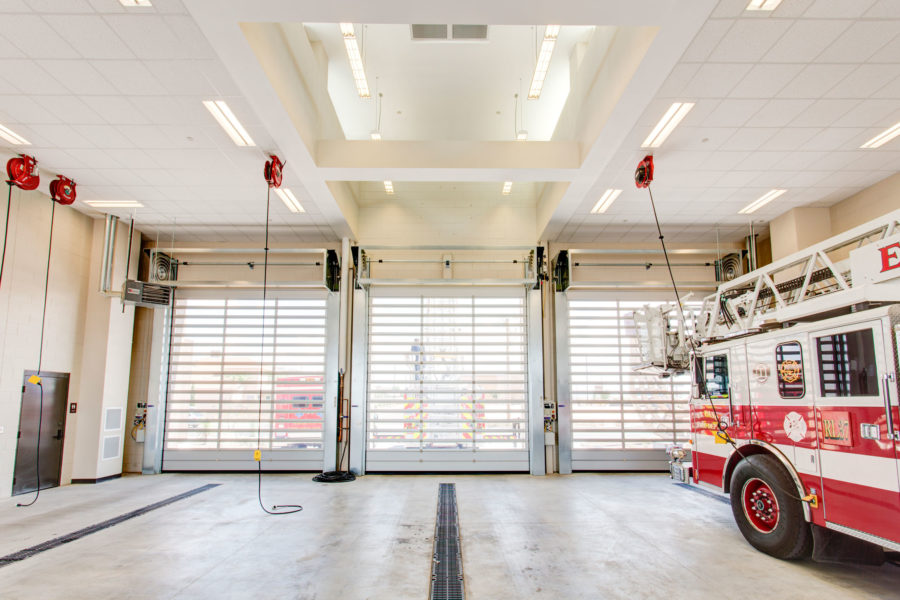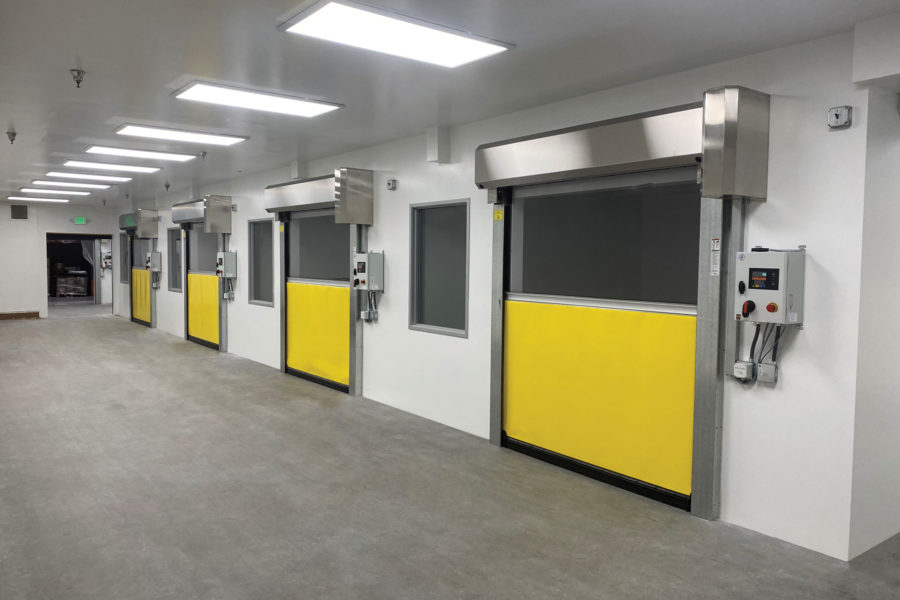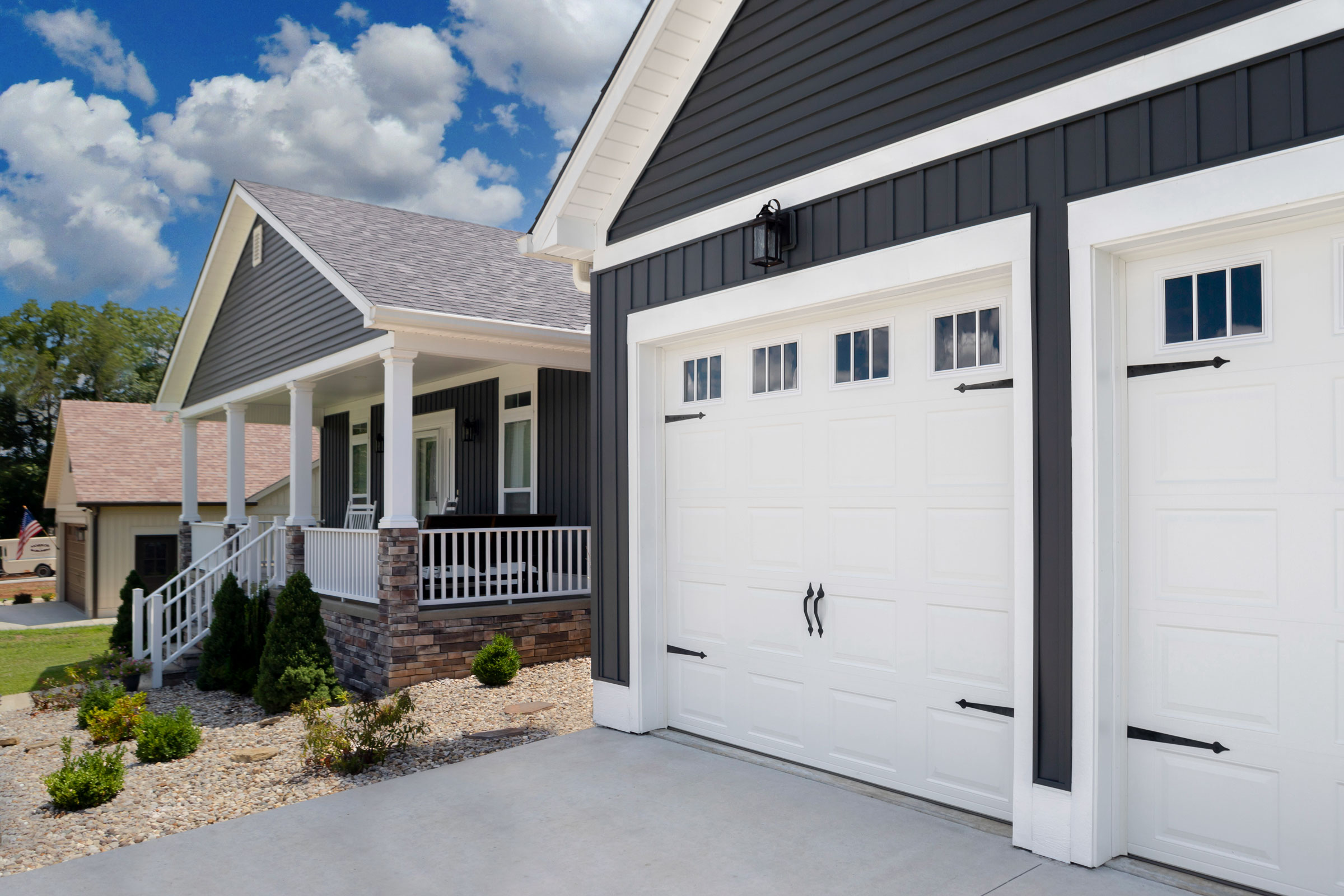Story at a glance:
- Door systems, particularly those with commercial, retail, municipal, and health care applications, have to perform at a high level.
- Energy efficiency and functional requirements of door systems go hand-in-hand; keeping out unwanted elements coincides with keeping in temperature controls.
- Doors are subject to vehicular abuse. Many components of Hörmann door systems are practically self-repairing, meaning accidents do not render doors unusable or require expensive repairs.
From their very inception doors have had a very simple function: Keep out what needs to be kept out and permit in or contain what belongs inside. And be reliable at both.
But simplicity doesn’t imply one size (or one type) fits all—particularly in commercial, industrial, health care, and retail environments. What needs to be allowed in and shut out, respectively, runs the gamut of lab technicians versus bacteria to Lamborghinis versus thieves to frozen chickens versus hot air.
In the modern world the door must perform precisely as expected. It has to be energy-efficient, made of the right materials, flexible enough to adapt to various functional requirements, resilient to human error, and sustainable. Given the dynamics of industry, economy, a changing climate, and design sensibilities, a healthy dose of innovation will always make for a better door.
Hörmann Group North America manufactures high-performance doors as well as residential and commercial doors that are characterized by efficient and progressive designs. These are some of their top qualities worthy of consideration.
1. Basic Performance

These commercial garage doors include windows. Photo courtesy of Hörmann Group North America
Performance requirements for high-performance and commercial doors vary greatly according to the specific application. Hörmann makes doors for fire stations, bus stations, waste management facilities, parking garages, automotive retail and maintenance facilities, cold storage units, food and beverage freezers and warehouses, and clean rooms found in health care and pharmaceutical settings.
For example, speed is everything in fire safety—the door has to open fast. Because fire stations are in virtually every neighborhood, they need to close fast and reliably to maintain security for expensive equipment left inside when firefighters go to work.
The Hörmann doors made for fire stations are also designed for a high open-close frequency (after all, fire alarms activate at all times of day or night, 365 days a year).
In more sensitive settings—like cold food storage and pharmaceutical clean rooms—the nature of the door itself and what it allows in is a make-it-or-break-it matter.
Some doors are a courtesy to the communities around them. Consider where solid waste is processed after a garbage truck leaves a neighborhood. Very often that’s done inside a recycling or waste incinerator building or at special facilities made for shredding recyclables or irradiating medical waste. “The speed at which these doors open and close keeps odors inside,” says Zach Buckner, director of marketing for Hörmann Group North America. “That’s not only good for the community; it helps the processor avoid air pollution fines.”
2. Energy Efficiency

Photo courtesy of Hörmann Group North America
Most people working with building insulation are familiar with the R-value metric. But to understand the efficiency with which a door keeps inside temperatures in and outside temperatures out, a better metric is the U-factor.
R-value is best applied to the static features of a building, the exterior walls, and more specifically, the insulation material used in those walls. But a U-factor applies to the multiple components of doors (and windows). It more holistically looks at what the entire door is made of, and therefore is a better indicator of total heat transmittance. U-factor looks at frames, panels, hardware, and seals; Hörmann doors enjoy favorable U-factors as established by the Door & Access Systems Manufacturers Authority (DASMA).
It also helps to return to the concept of speed when discussing energy efficiency. A door left open longer will allow more air exchange and, consequently, energy loss, be it warm or cold air inside.
3. How They are Made

The Park-King rubber door is flexible yet strong enough to stand up to most incidents. Photo courtesy of Hörmann Group North America
Many Hörmann doors models are made with a thicker gauge of steel than other doors on the market, and their use of a proprietary blend polyurethane sets industry standards for functionality and resiliency factors.
And many doors are subject to equipment operator or visitor abuse. That includes public garages, where drivers with surprising frequency will ram the doors with their cars—unintentionally in most instances. The Hörmann Park-King™ rubber door is flexible yet strong enough to stand up to most of these incidents. “If a car rams a Park-King rubber door it is almost self-repairing,” Buckner says. “A building maintenance professional can simply roll it up and direct the door curtain back into the guide tracks, and the door is operational within a matter of minutes.”
Additionally, the company is vertically integrated. It manufactures most of its own door components, which offers several advantages. One is product-specific quality control, making sure those frames, panels, hardware, and seals fit right. Other benefits are supply chain reliability, cost stability, and waste reduction through recycling. “We lead the industry on delivery and lead times with our high-performance rolling steel doors as well as other products in our portfolio,” Buckner says.
4. Design Flexibility

Speed-Guardian doors. Photo courtesy of Hörmann Group North America
The aesthetics and design requirements of industrial projects sometimes rival those of residential architecture. Buckner says Hörmann has a certified architect on staff for this very reason.
“With high-performance doors we have to be adaptable to customer needs,” he says. “With our Speed-Guardian™ rigid door we offer a variety of vision choices, from clear to tinted and ventilated, and doors may be custom-painted any RAL color to match any building aesthetics.”
The company offers a continuing education-credit course through AIA; specifying the doors can be done through architectural design platforms like MasterSpec and RIB and directly incorporated into building designs using BIM software.
5. More Sustainability
The vital nature of efficient door closures is what every child learns from a parent. “We’re not heating/cooling the neighborhood!” is what any adult who pays the utility bills will say.
But sustainability practices start long before that in how and where Hörmann doors are made. The vertically integrated supply chain enables the company to use machine software that calculates raw material usage, keeping waste to an absolute minimum. What scrap metals and paper result in the manufacturing process is recycled, while packaging materials used in shipping is from sustainable sources. The vast majority of door components are manufactured in North America, eliminating trans-oceanic shipping.
When Hörmann constructs a new corporate facility, energy-saving features are part of the building design. For example, both the Sparta and Burgettstown facilities have drive-in shipping and receiving areas where trucks pull in, and the large exterior doors are closed during loading. Also, exterior mounted window blinds are installed on all office windows and help conserve heat or AC depending on the time of year.
6. Innovation
Everything new and improved is innovative, but this company embeds innovation in the core of how it is structured.
Hörmann Group North America is a division of Germany-based Hörmann Group, a nearly 90-year-old family-owned company with annual revenues north of 1 billion Euros. The company’s Burgettstown, Pennsylvania operations specialize in high-performance, high-speed doors; its Montgomery, Illinois, Puyallup, Washington, and Sparta, Tennessee locations manufacture residential doors and commercial sectional doors using steel, wood, and aluminum. The company’s high-performance rubber doors for mining, heavy industry, food distribution, logistics, and parking were designed and are made at their Barrie, Ontario facility (formerly TNR Industrial Doors).
The company’s considerable technical knowledge in each location is supplemented by highly experienced engineers based in Germany. “Our talented staff of engineers in North America collaborate with our German colleagues on a regular basis, including discussing innovative ways to expand the application base of all products in North America,” says Buckner.
7. See-Through Doors

Speed-Commander fabric high performance doors. Photo courtesy of Hörmann Group North America
While physical objects are kept in or out with these highly functional doors, there are times and places where visual sightlines between inside and outside serve important functions as well.
For example, the Speed-Commander™ Series of fabric high performance doors made with vinyl provides ample, full-width vision areas to enable workers to safely see each other as they move materials in and out.
Because whether you’re in or you’re out, knowing what’s on the other side of that door can often matter a great deal.

